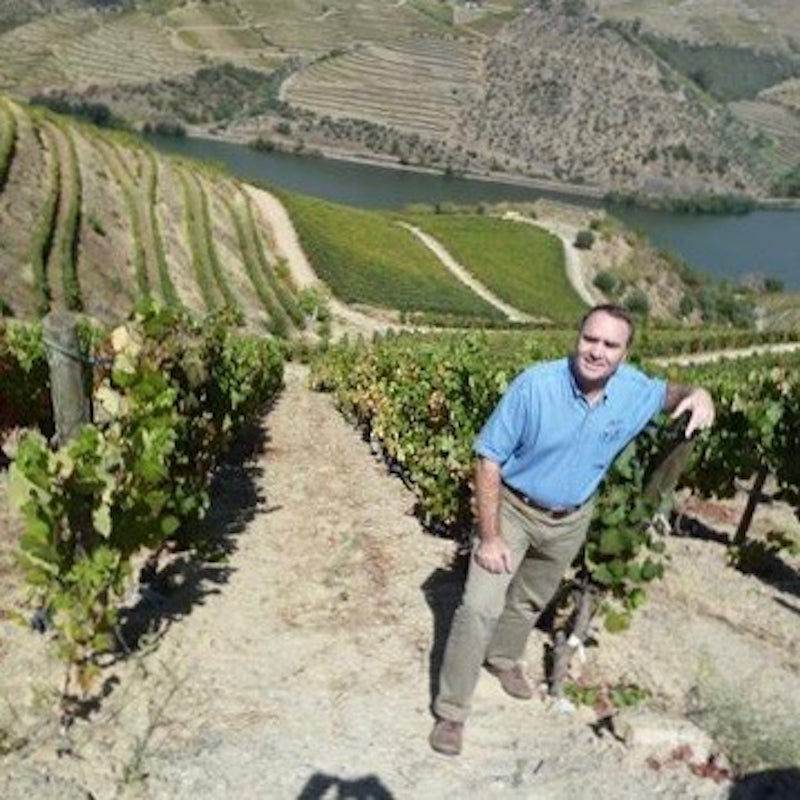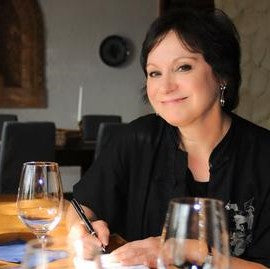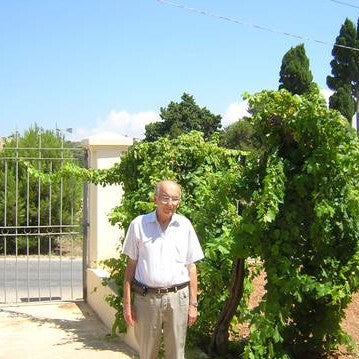Professor Greg Jones and David Furer first encountered one another at the first of Spain's three Climate Change & Wine conferences developed a over a decade ago by Pancho Campo and the Wine Academy of Spain. The Barcelona gathering was a watershed for both--his is touched upon in the interview while mine is that it garnered me more bylines--six--from one story's reporting than any before or since. Since then the Southern Oregon-based climatologist's research and consulting has been widely recognized as leading the way forward in helping vine growers on North America's west coast and elsewhere to wisely attend to the impact made by a phenomenon once scoffed at but now accepted as common wisdom. David caught up with Greg to ask him for his thoughts on climate's past, present and future impacts on the wine industry
What do you find are the greatest misperceptions associated with climate in the wine production sector?
There are multiple issues with the biggest being that we use measures of climate that are often misunderstood. Take for example the ‘degree-day concept’ it is used as a comparative measure by many in the wine industry, yet people often use data that isn’t warranted or the method used makes the numbers incomparable. Numerous people using data from the same station might use daily, weekly, or monthly data; but when they calculate degree days they can all come up with different numbers. So what happens is that someone in one region can calculate degree days with monthly data that are the same as one done in another region with daily data, yet the regions actually differ by 10-30% in degree days. So unless the degree day numbers come from the same time step and use the same formula, they really aren't comparable. Also the term ‘degree day’ is a complicated measure as it’s an accumulation of temperature, or a measure of heat over time—not an actual temperature, and users are not always clear on what it really means to a plant system as it develops.
To what do you attribute the wine business’s seemingly high level of interest in climate change as compared to other agricultural sectors and that of the public at large?
The first is the broad difference between broad acre crops grown over a larger areas with greater climate suitability (e.g., corn, wheat, soybeans, etc), than specialty crops that are grown over smaller areas with narrower climate suitability. For example coffee, chocolate, wine grapes, pineapples, and avocados are specialty crops so their climatic niche is more narrow, making them more easily impacted by small changes in climate. Furthermore, the interest in climate change and wine is because wine encompasses life—art, history, gastronomy, soil, climate—all of these ties create a broader spectrum of interest. Also, some crops are more visual to the public, for example most people have never seen chocolate growing so don’t have that visual connection with the cacao plant or even that of a coffee plant. But many identify with vineyards and wine grapes. A narrow climate niche and a broader cultural association gives wine grapes more attention from the general public.
We first met many years ago at the first of Spain’s three Climate Change & Wine conferences held soon after the landmark 2003 summer. How did this momentous period inform the ongoing study and work in your chosen field?
When I first started studying wine grapes I was very interested in better defining climate’s role in terroir. When I did my dissertation work in the early 1990s I found that climate scientists knew little about the crop while viticulturalists knew something about climate, but not the way climate scientists did, so I tried to bridge the gap between them by first trying to define the climate of Bordeaux; in that process I found that the climates of today were clearly different than they were in the past and that producers had already experienced significant change. When the first conference occurred I was at the cusp of publishing a series of articles and book chapters that included evidence of changes that were going on around the world of wine. Speaking at the conference gave me a venue to provide good climate science background on the changes and impacts. Up until my publications and the first conference, there had been very little written on the topic, and after the conference scientists from many areas began examining their regions in more detail and citing my original papers more. In some ways my early work helped open the door to more research in these areas.
Please explain how shifting climate factors into how species are impacted, and how these consequences may effect viticulture.
When we speak of climate change most humans tend to say 1 degree is no big deal. But when we look at the potential impacts on plants, animals, or insects, 1 degree could mean survival as many organisms have very narrow climate zones that they exist in and are not very mobile. Numerous organisms that influence wine grape production could be impacted as well; mites or sharpshooters, and the diseases or issues they bring, are generally climate-limited, so when things are colder in the winter then populations are generally contained in the following summer. Warmer winters produce more life cycles and populations can either explode or expand their ranges. In Oregon we didn’t have much of a winter this year, which could mean higher organism populations this summer.
Much has been written speculating that in 50-100 years fine wine grapes will be grown in lower Scotland’s hills and that central Spain’s premier growing areas will be able to produce quality exclusively for bulk, that Bordeaux will be better suited for Tempranillo and Burgundy for Cabernet Sauvignon; do you buy that?
As a scientist it is pretty clear, if what we know about how and where wine grapes have been grown historically and those relationships hold into the future, the continuing changes in climate will alter the suitability of existing wine regions and open up new areas to cultivation. I do believe that regional differences in changes will mean that some will change more rapidly than others. What we’ve noticed in the past 40-60 years is that greater warming has been occurring at higher latitudes. For example the English wine industry is flourishing today (although recent news highlights that the first Scottish wine is described as “undrinkable” by experts) and there are already small vineyard operations in Scandinavia. Yes, I buy into wholesale change if the system isn’t as adaptable as we think it is. I don’t think we know everything in terms of both plant and human adaptation, but if what we know from history is correct, then most regions will likely be producing different types or styles of wine. Ultimately if what we know today is correct and climates continue to change in the way that climate scientists are predicting, then we’ve a lot of challenges ahead. I think agribusinesses have a much greater adaptive capacity than we know, and this capacity will depend upon how much the climate changes and how it brings about changes in available water. What happens if Bordeaux becomes substantially drier in the vegetative cycle? It then will become more ‘Mediterranean’ and may require irrigation in the future. However, changes in rainfall amounts and patterns are the hardest climate factors for us to model.
How might shifting climate factor into human land use in California, and how might you speculate this would effect production costs?
Allocation of water is the real issue. Land prices are going to have some adjustment based upon water availability. The demands on water are so extreme in a water-limited area such as California or Australia, that how we manage or divide up the water will be the biggest issue. California has experienced recent drought, which is relatively historic, but not too far outside the norm of what we would expect to see. But even short term changes in water availability will affect the cost and use of agricultural land. Even if the landscapes and soils are still good for agriculture, if you can’t access water and produce an economically viable crop—why would you do it?
How do you reckon the shift in balance between acidity, sugars, and phenolic compounds in grapes partly correspondent to climatic shifts have impacted expectations of the US palate?
We know that climate is clearly a controlling factor in this; warm growing seasons or warm regions tend to produce riper fruit and earlier harvests. With changes in climate over time, many have seen rising sugar levels, lower acidity, and greater needs for managing ripeness and alcohol. Growers will always be shooting for balance and achieving the ‘sweet spot’. Warmer conditions often means that we will experience sugar- ripeness before phenolic-ripeness while acidity is correspondently lost. However, it’s a hard thing to make the connections between shifting climates, shifting wine styles and shifting consumer tastes. Much of our wines today have completely different structures than they did 20 years ago. Some of this is clearly due to climate, but some also clearly due better plant material, grower knowledge and winemaking capabilities. Like many, I believe wine is a food and needs to work with other foods; it’s a big game to produce something the consumer both recognizes, enjoys and will buy. While winemaking changes continue, many people expect finer wines to have similar wine quality to maintain its sameness. Given further changes in climate I think we have to expect and embrace changes in these wines. For me, today’s Burgundies have a broader range of wonderful differences in them that have made them more approachable when younger compared to those made in the past. Recommending around climate change issues for a sommelier is a challenge.
How has the rapid rise in UV-B radiation impacted grape characteristics?
A lot of research has been done in this area but more still needs to be done. More UV light changes compounds in the fruit and the vine itself, driving certain characteristics such as what makes Sauvignon Blanc in New Zealand what it is. Flavor compounds occurring in high UV light zones help provide a different structure to them according to an Argentine colleague of mine that grows above 6000 ft in elevation. Also, we know that UV light is slightly higher in Lake County but it’s hard to quantify how that impacts the wine as the heat summations differ from those on lower elevation areas. More research is needed to better understand these issues.
Your father Earl owns and runs Oregon’s esteemed (at least by this writer) Abacela Winery. What confluence is there of your overlapping professional interests?
I was going to be a hydrologist and in doing my early research I took a class in climatology which piqued my interest in climate & agriculture, something which coincided with my father looking into setting up a vineyard and winery. When he asked questions about climate’s role in how and why Iberian varieties perform the way they do there helped me to understand the entire system. I probably wouldn’t be where I am today had my father not unwittingly sent me digging into data and research on the wine industry. We talk about climate and the entire terroir influences on wine production all the time—how we planted the vineyard over the years, how varieties are performing, did that performance meet our expectations, why do weather patterns flip and how can we manage and adapt around them? These impact us simultaneously from the technical and production sides. This is something I truly enjoy.
Knowing what you know about shifting climatic patterns and of wine in particular, if you were given $1 billion to invest in an as-yet undiscovered wine production area, where would it be?
I would lean to Bio-Bio and to the Lake District of Chile; it’s one of the most beautiful places in the world. There’s some wine production happening now but it has a great potential to be a wonderful cool climate wine region in both the short- and long-term. It’s a place I’d be glad to live. Tasmania, parts of British Columbia, and Oregon all also have tremendous potential for growth that hasn’t been realized yet, too.
Discover how temperate climates impact the wine industry in our Temperate Climate Wines of the World Workshop.
Check out our full schedule of programs, workshops and public events. Private, customized experiences and corporate training is also available.



